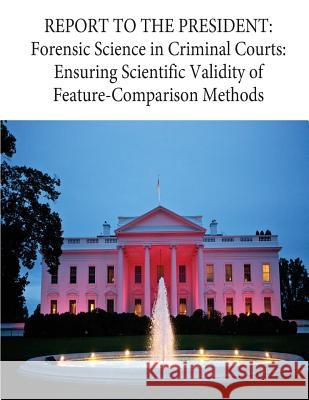Report to the President: Forensic Science in Criminal Courts: Ensuring Scientific Validity of Feature-Comparison Methods » książka
Report to the President: Forensic Science in Criminal Courts: Ensuring Scientific Validity of Feature-Comparison Methods
ISBN-13: 9781539172000 / Angielski / Miękka / 2016 / 132 str.
Report to the President: Forensic Science in Criminal Courts: Ensuring Scientific Validity of Feature-Comparison Methods
ISBN-13: 9781539172000 / Angielski / Miękka / 2016 / 132 str.
(netto: 64,78 VAT: 5%)
Najniższa cena z 30 dni: 67,46
ok. 16-18 dni roboczych.
Darmowa dostawa!
Published and needed studies for pattern-based forensic science methods What studies have been published in the past 5 years that support the foundational aspects of each of the pattern-based forensic science methods, including (but not limited to) latent print analysis; firearms/toolmarks; shoe/tire prints; bitemark analysis; questioned documents? What studies are needed to demonstrate the reliability and validity of these methods? Have studies been conducted to establish baseline frequencies of characteristics or features used in these pattern-based matching techniques? If not, how might such studies be conducted? What publicly accessible databases exist that could support such studies? What closed databases exist? Where such databases exist, how are they controlled and curated? If studies have not been conducted, what conclusions can and cannot be stated about the relationship between the crime scene evidence and a known suspect or tool (e.g., firearm)? How is performance testing (testing designed to determine the frequency with which individual examiners obtain correct answers) currently used in forensic laboratories? Are performance tests conducted in a blind manner? How could well-designed performance testing be used more systematically for the above pattern-based techniques to establish baseline error rates for individual examiners? What are the opportunities and challenges for developing and employing blind performance testing? What studies have been published in this area? What are the most promising new scientific techniques that are currently under development or could be developed in the next decade that would be most useful for forensic applications? Examples could include hair analysis by mass spectrometry, advances in digital forensics, and phenotypic DNA profiling. What standards of validity and reliability should new forensic methods be required to meet before they are introduced in court? Are there scientific and technology disciplines other than the traditional forensic science disciplines that could usefully contribute to and/or enhance the scientific, technical and/or societal aspects of forensic science? What mechanisms could be employed to encourage further collaboration between these disciplines and the forensic science community?
Zawartość książki może nie spełniać oczekiwań – reklamacje nie obejmują treści, która mogła nie być redakcyjnie ani merytorycznie opracowana.











